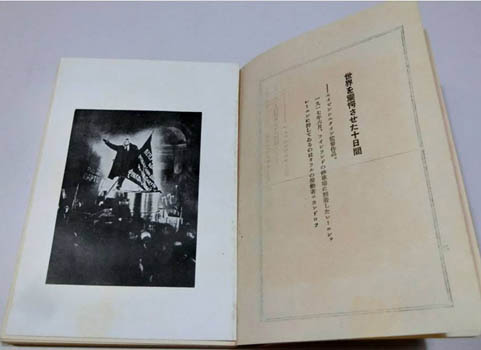
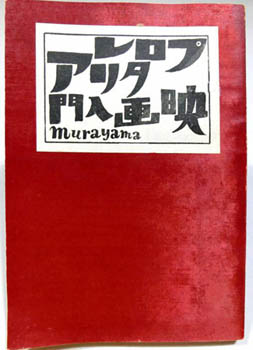
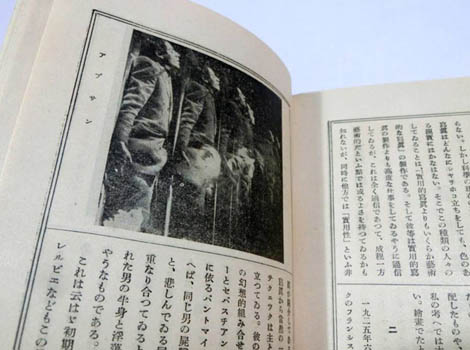
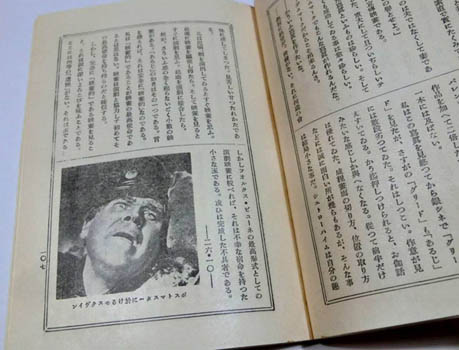

Murayama Tomoyoshi. [Puroretaria Eiga Nyumon]. Tokyo, Zen'ei Shobo 1928 (Showa 3), 19x13cm publisher's red wrapper with mounted label (wrapper colour patchy); [8],276pp, loose photo frontispiece, photo illustrations through the text. A nice copy in the original card slipcase. Au$600
First, only contemporary I'm sure, edition of Murayama's introduction to proletarian film - a literal translation of the title. By 1928 Mavo founder Murayama had already had one play banned and soon enough began the first of a series of arrests for troublemaking. Mavo, a determined regrounding of constructivism - which Murayama had brought back from Germany - in the concerns of real life, was both progenitor and, for a while, companion of specifically proletarian branches of the avant-garde: the Proletarian Art Academy and the Proletarian Art Federation, the Proletarian Film League ... . You will find Murayama's name in the histories of them all. He made films of course; infuriated architects by designing buildings; designed, wrote and directed plays; wrote novels, theory and criticism like this; painted and made collage constructions; and like many radical, or just outstanding, artists of his generation, made his living illustrating children's books and magazines.
It may seem trivial but even the title of this book, using the phonetic transcription of 'proletarian' was a modern typographic departure from the usual three character Kanji - musansha. Worldcat finds no copy of this outside Japan.
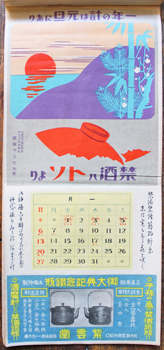
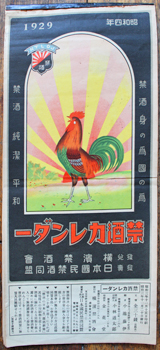
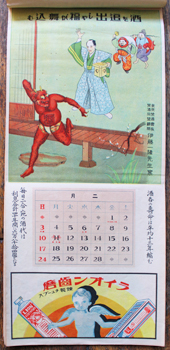
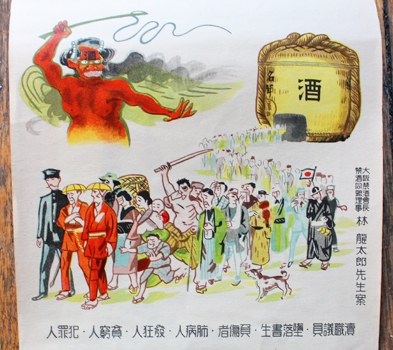

Yokohama Temperance Association. [Kinshu Karenda]. 1929. Yokohama Kinshukai 1928. 38x17cm publisher's colour illustrated wrapper with (crooked) metal strip along the top; 12 leaves printed on one side, each with a color illustration and advertisement. Au$100
This is the reason why someone with even my momentary attention span can remain fascinated with Japan in the late 19th and early 20th century. There is always something I never imagined might exist. Here we have the 1929 Temperance Calendar from the Yokohama Temperance Association. If there are any for other years or from other local associations I haven't find them yet.
The temperance movement arrived in Japan with American Christians, of course, and blossomed despite some anti-Christian schisms early in the 20th century. They never achieved prohibition but did get the still current under age law passed in 1922, setting the legal drinking age at 20.
One of the leaders of the early temperance movement was Ando Taro, former Consul General in Hawaii. He, on his own account, had been a heavy drinker from his early teens until his wife put an end to his drinking in Honolulu. Seems to me that despite being on the wrong side in the Boshin War and a year in prison, becoming Consul General in Honolulu before the age of 40 shows that the boozing was, at least, not so harmful, maybe beneficial.
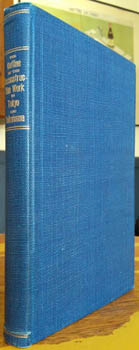
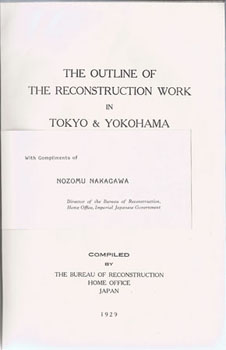
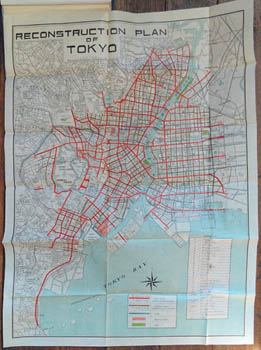
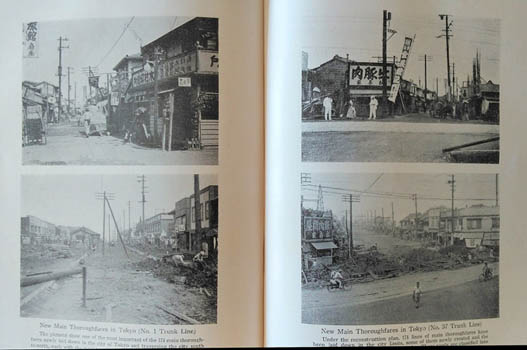

Tokyo. The Outline of the Reconstruction Work in Tokyo & Yokohama. Bureau of Reconstruction, Tokyo 1929. Octavo, very good in publisher's cloth; [14], vi, xii, 220pp and 6 large folding maps, photo illustrations through the text. The Imperial Edict (four pages) printed on a coloured ground with gold border. Au$475
The official report, or boast, to the outside world on the rebuilding after the great 1923 earthquake (and on the earthquake itself). The aim was "not only to restore Tokyo ... but also to build a new capital with an aspect entirely new and quite different", a "gigantic work unparalleled in the history of city planning of the world" - by 1929 "nearly accomplished" (preface & foreword respectively).
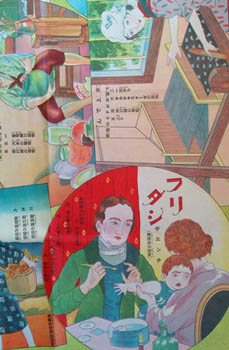
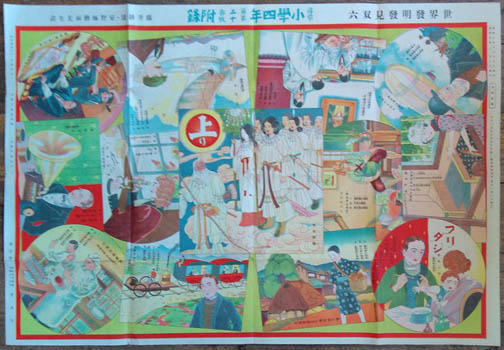
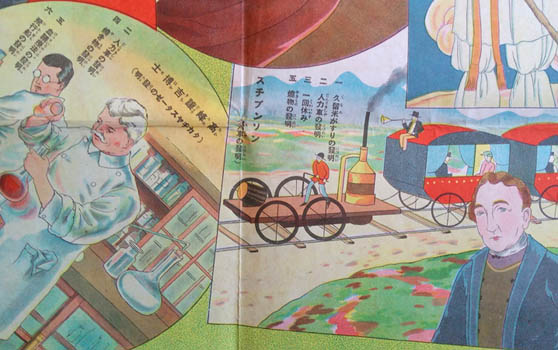


[Sekai Hatsumei Hatsuken Sugoroku]. Tokyo, Shogaku Shinensei Furoku 1929 (Showa 4). Colour broadsheet 54x78cm. A rather good copy. Au$300
An inspirational, if odd, game celebrating great inventors. This was the new year gift from Shogaku Shinensei - a magazine for 4th graders. I'm not sure whether you get to be a god or hang out with a god, join his procession.

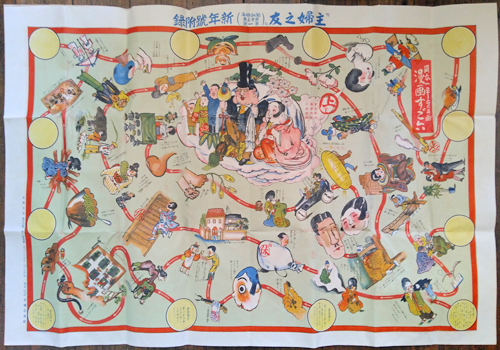
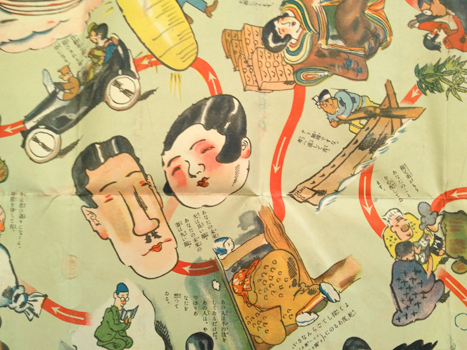
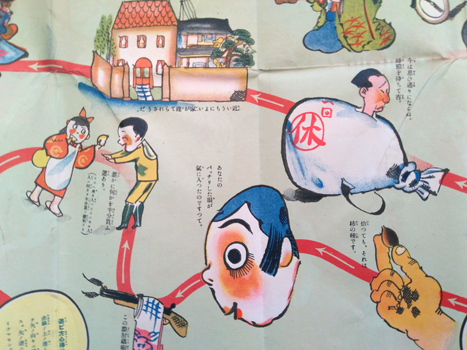

Okamoto Ippei. [Shufunotomo - Manga Sugoroku]. Tokyo, Shufunotomosha 1929 (Showa 4). Broadside 64x94cm; colour printed. Rather good. Au$400
A splendid large and lively sugoroku issued as a New Year gift by the magazine The Housewife's Friend. The game is an intriguing melange, to me, of the modern and traditional; whether in conflict or harmony or all round mocked I don't know. The winning post - the joyful family of plump plutocrats with both husband and wife looking remarkably like lucky gods - is the dream of the modern young woman being hatched from an egg in the upper right but she is not the starting point of the game. There seems to be several starting points. Did any young western woman ever dream of being rich and fat?
Ippei, radical and scallywag, was the king of newspaper cartooning as Rakuten ruled the magazines in Taisho and early Showa Japan. It was Ippei that brought the American comic strip to Japan and he heads, with Rakuten, the lists of idols and inspiration of many modern manga artists.
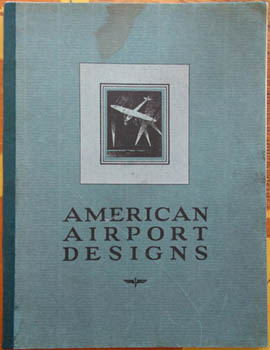
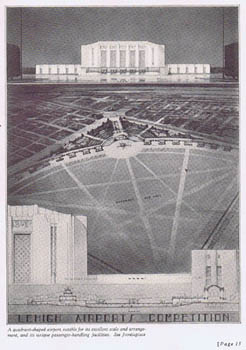
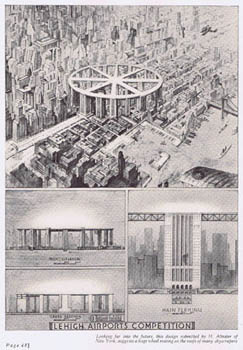

BLACK, Archibald et al. American Airport Designs - containing 44 prize winning and other drawings from the Lehigh Airports Competition ... NY, for the Lehigh Portland Cement Company 1930. Quarto publisher's illustrated heavy wrapper (a stain on the front, later cloth spine); 96pp, mostly plates. A more than decent copy. Au$250
This is, I believe, the first American book on airport architecture, gathering designs submitted to the country's first such competition. The compiler is confident that there are plenty of new ideas never used in Europe and the schemes range from token crackpot visionary - a circular runway running around the tops of skyscrapers - to beaux-arts, with the bulk falling into classical moderne.
Common to all designs chosen for inclusion is a formal layout, with runways, often circular, that range from something like parterre gardens to complex occult symbols; surely evidence that a good beaux-arts education still prevailed. Two designs that have some flashy distinction are by Los Angeles and Florida architects, naturally, with a film set skyscraper and a modernist tower respectively. Both are condemned as unsafe. Maybe interesting now would be tracking down the entries that didn't make the cut - neither Wright's nor Neutra's made the book.
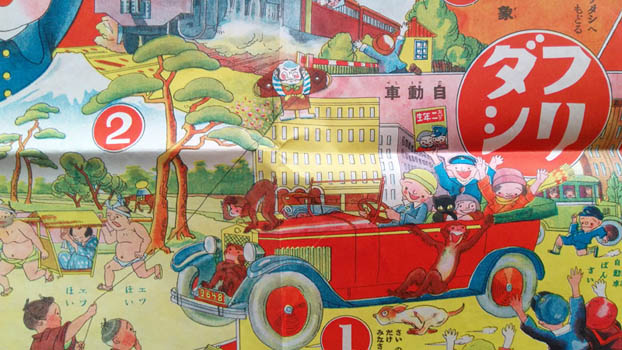

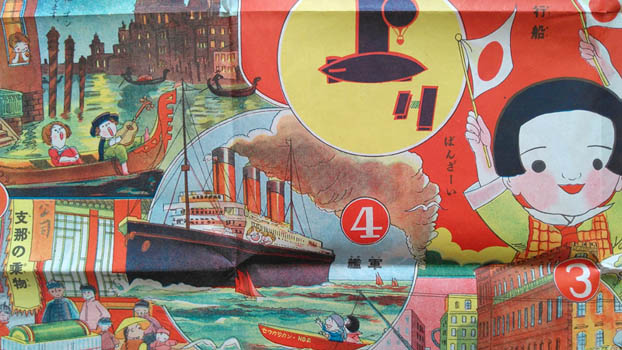
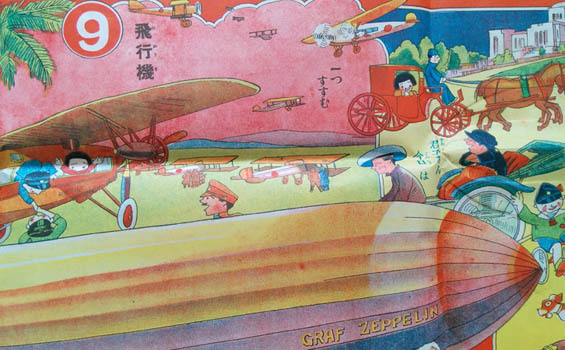

Sugoroku. [Kodomo Norimono Sugoroku]. Tokyo, Seugaku Ninensei 1930 (Showa 5). Colour lithograph broadside, 54x78cm. A rather good copy. Au$500
An exciting and vivid jaunt around the world and all forms of transport is the theme here. This was the New Year treat that came with the magazine Seugaku Sophomore (for the second year of primary school).
I don't know who those two kids are but they never aged and, with updates in fashion and style, seem to have been on a ceaseless whirl of travel and adventure ever after. For decades new but the same sugorokus appeared. The zeppelin vanished of course, square automobiles became sleek cars, trains went diesel and electric, aeroplanes became jets, and on they went. Perhaps they learnt early what many idle wealthy globe trotters know: that a diet of fine demi-sec and pure cocaine keeps you young forever.
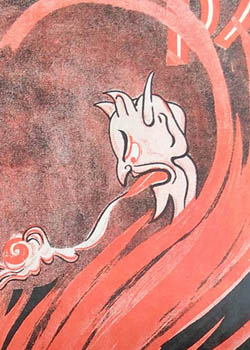
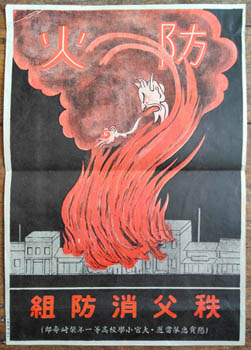

Fire Safety Poster. - [Hifuse - Chichibu Shobogume]. Chichibu Fire Prevention Publicity Department [c1930?]. Colour litho poster 39x27cm. Horizontal fold and creased in a top corner. Au$150
The Chichibu Fire Prevention department produced a series of these fire safety poster. I think they were the result of a school competition. So far I've seen three. One makes the fire department more threatening than a fire, one seems a lesson in how to burn down the city and this one takes a more theological approach: fire is neither an accidental nor deliberate act of people, it is a demonic being.
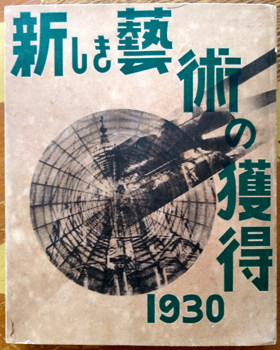
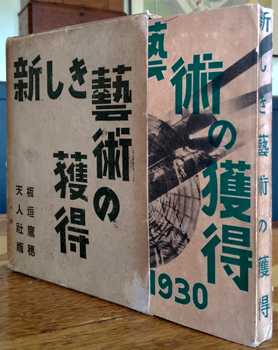
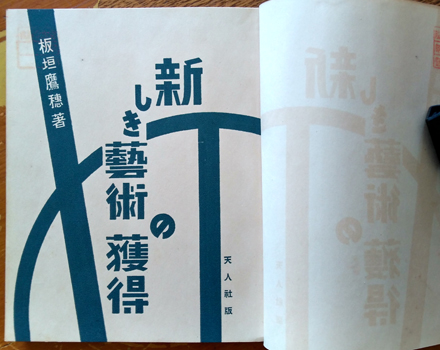
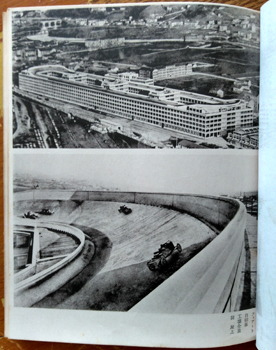

Itagaki Takao. [Atarashiki Geijutsu no Kakutoku]. Tokyo, Tenjinsha 1930. 20x15cm publisher's illustrated wrapper and printed card case; 10,246pp including photo illustrations on 16 plates.Covers mottled as usual with copies that have stayed safe in their box, some browning and minor signs of use; quite good. Au$500
First edition of this essay by the champion of modernism in Japan on the machine and new architecture and design, propounding his concept of "machine realism". This was a theme Itagaki pursued through a few books between 1929 and 1933.
I think the cover shows a locomotive bursting out of some old world construction but it all reminds me of a crashing zeppelin. I can't find a designer's name.
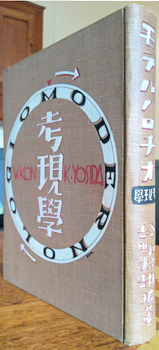
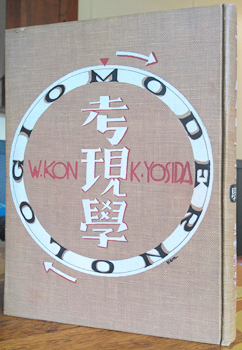
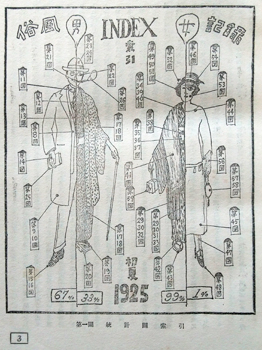
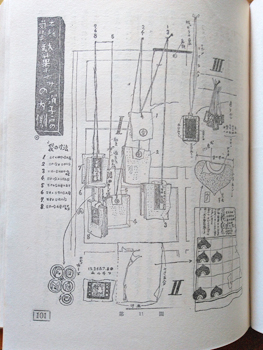

Kon Wajiro & Yoshida Kenkichi. - [Moderunorojio - Kogengaku]. (Modernologio on the cover). Tokyo, Shun'yudo 1930 (Showa 5). 26x20cm, publisher's decorated cloth blocked in white, red and black; 361pp, profusely illustrated throughout, a few photo or colour plates. Light browning, much less than usual; a remarkably good copy of a book that invites continual thumbing. Au$850
First printing. This is an extraordinary book; the gospel of Modernology. Kon and Yoshida have compiled an encyclopaedia, surely unsurpassed, of the apparently ordinary, of the people of Tokyo, fit to provoke unseemly enthusiasm in theoreticians and urban planners ever since. I gather that their thesis - born out of watching the people of Tokyo begin to rebuild after the 1923 earthquake and fire - is that those who do the planning, designing and official building know nothing of what people actually do, what they own and how they use those things - how they live and who they are.
The cover, signed Ken, and most of the illustrations are by Yoshida who has re-spelled his name on the cover for the sake of the design.
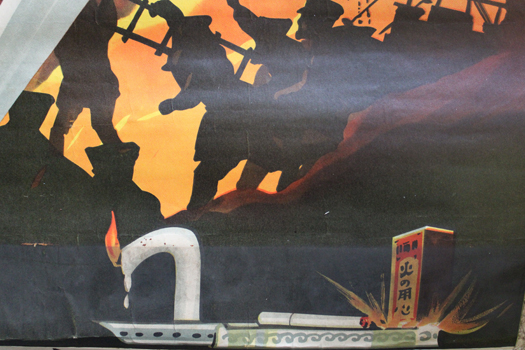
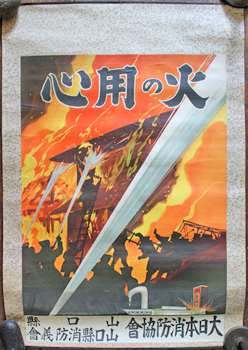
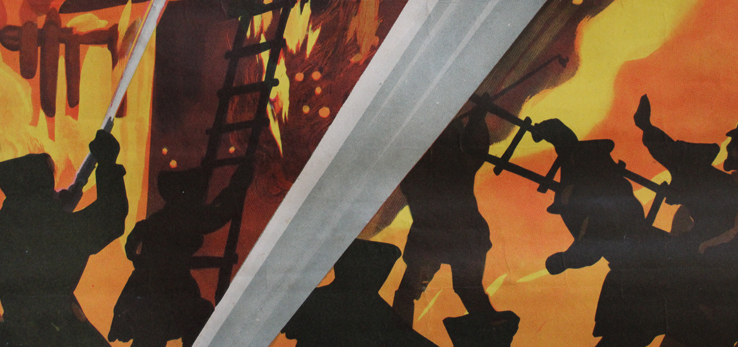
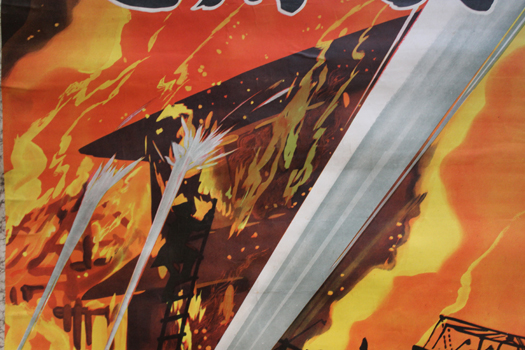

Fire safety poster. [Hinoyojin]. n.p. [193-?]. Colour poster, 66x51cm on original patterned mount, 88x61cm, with metal strips at top and bottom. Some rumpling. The mount and strips are original but the brown paper backing looks much more recent. Au$200
Spendidly dramatic and helpful with a line up of the likely suspects in the bottom corner: the matches, the cigarette and the neglected candle.
The caption below the poster is separately printed, identifying the local fire department: Yamaguchi Prefecture.
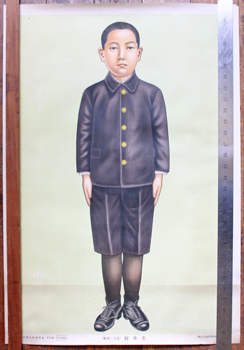
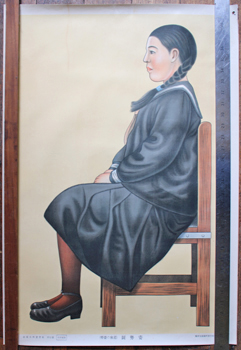
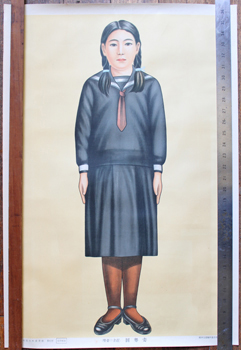
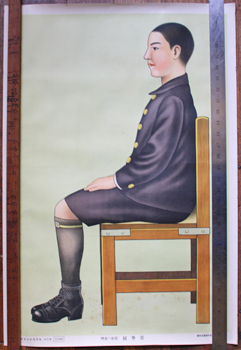

School posters. - [Shiseizu - Kyoshitsu Jobi-yo]. Osaka, Teikoku Kyoiku Shiryo Henzan Kyokai [1930s?]. Four colour litho posters 79x55cm. A little browning, a couple of small nibbles; an excellent complete set in the original cardboard tube with printed title label. Au$250
Now this is education from first principles. Girls and boys learn how to stand and how to sit and it's easy to see the difference. From here we can go on to reading, writing and arithmetic. These were produced by the imperial education body who certainly knew what's what.
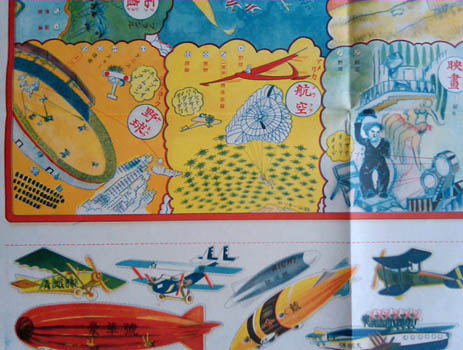
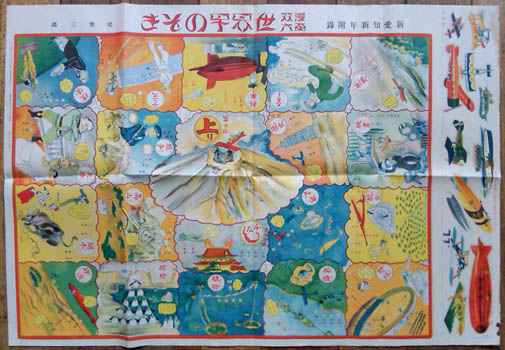
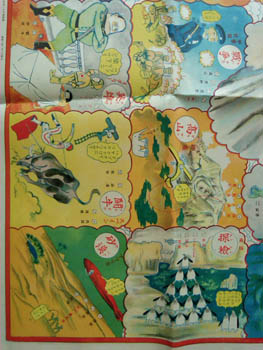
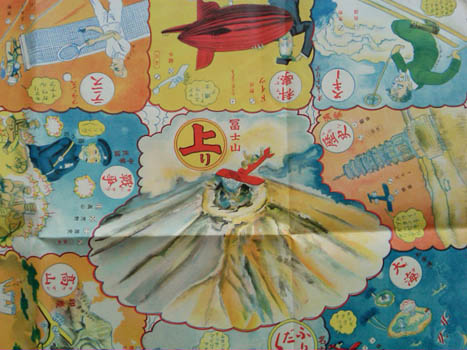

Tsutsumi Kanzo. [Manga sugoroku sekai haya nozoki]. Nagoya(?), Shin Aichi 1931 (Showa 6). Colour lithograph broadside, 55x70cm; Folded, a touch of nibbling on one edge; a nice copy with the playing pieces intact in the right margin. Au$400
Sugoroku, these paper racing games, like most genres of Japanese graphics range from the fabulous, through insipid to kitsch to awful to downright disturbing. This one is up the fabulous end of the scale.
Tsutsumi - one of the great pioneers of modern manga - takes two young aviators on quick world tour and shows them all the most important things. Curious, for me, is that each stop is not headed with the country name but some quality, some spectacle, some activity. Thus meeting Mussolini in Italy is titled 'hero'; for baseball we see see Babe Ruth knocking over a New York skyscraper; tennis is Henri Cochet in France; film is of course Charlie Chaplin in Hollywood; science is a zeppelin in Germany; war is Chiang Kai-shek in China; manners are learnt in England from Ramsay MacDonald; I'm not sure what the gymnastic penguins in the Antarctic represent. And so on round the globe with celebrity and national stereotypes galore.
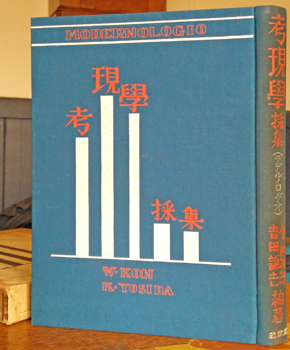
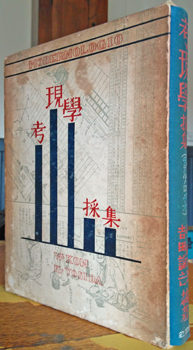

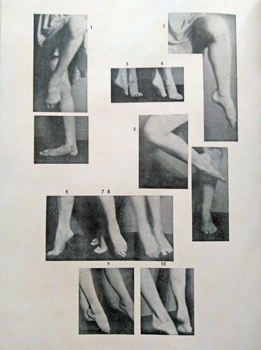

Kon Wajiro & Yoshida Kenkichi. ( ). [Kogengaku Saishu (Moderunorojio)]. Tokyo, Shun'yudo 1931 (Showa 6). Quarto publisher's cloth blocked in red and white (spine a little rubbed), rather browned but solid illustrated slipcase; [2],323pp, photo illustrations, hundreds of line drawings and diagrams (one with colours added), endpaper map. A few blotches and small flaws, quite good. Au$750
First edition of the companion to the 'Modernologio' of the previous year - together they are the gospel of Modernology. Kon and Yoshida here collect data to extend their extraordinary encyclopaedia of the people of modern Tokyo. Their thesis was that those who do the planning, designing and building know nothing of what people actually do, what they own and how they use those things - how they live and who they are. I can't imagine anything you might ever think about and a lot you would never think about that isn't collected here. How you walk, where you walk, what you carry, how you carry it, where you dance, how you dance, how you sit, where your shelves are and what's on them, in your cupboards ...
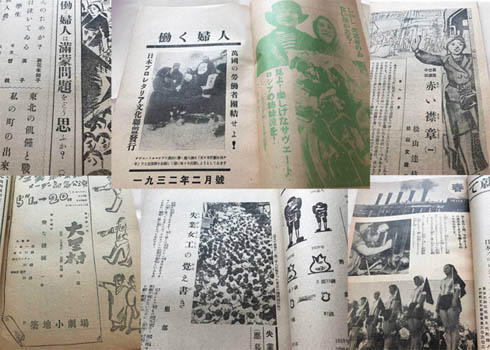
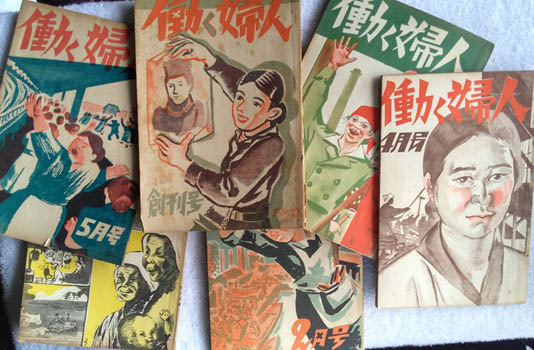
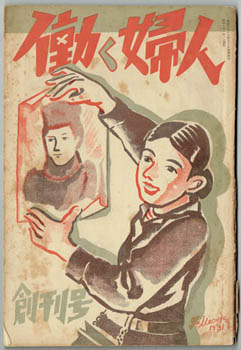


[Hataraku Fujin]. No. 1 to no. 5, no. 8, no. 11 and Vol. 2 no 3/4 Tokyo, Nihon Puroretaria Bunka, Jan - Nov 1932, April 1933 (Showa 7, 8). Eight issues in colour illustrated publisher's wrappers 22x15cm; contents range from about 140pp to about 70pp but the numbering of some issues is alarmingly erratic, b/w illustrations, monochrome photo illustrations. No.8 must have been a troubled issue; it is particularly humble and seems to have been assembled in careless haste. Expected browning of the cheap paper, signs of use but all rather good. Au$1500
Maybe eight elevenths - or eight thirteenths, or not - of the whole run of this trouble making left wing magazine for the Working Woman. It's hard to untangle. I can't find any complete set of these original copies. A reprint, probably not complete, was made in 1980 which seems to include eleven issues running from January 1932 to a March/April 1933 double issue - eight for 1932 and three for 1933. I found a mention that no issues appeared some months. The issues here are numbered by the month they appeared - which may mean there are gaps in the numbering of a complete run or that there are issues no-one has found. The holdings of 13 university libraries in Japan put together seem to add up to v1(1 -10) for 1932 and v2(1-3) for 1933 but the numbering is iffy even then.
Being a communist in Japan in the thirties was a fraught business and the foundation of the Nihon Puroretaria Bunka Renmei - Japanese Proletarian Culture Federation - late 1931 and the flourish of Proletarian books and magazines in 1932 and early 1933 was a last stand of the left. Being gaoled was one thing, being tortured and killed another. In her novel '1932 no Haru' (Spring 1932) writer Miyamoto Yuriko incorporated her editorship of early issues of this magazine, arrest after the April 1932 issue (on the right in the picture here), and the torture and death of poet Konno Dairiki. This wasn't her last arrest and Konno's wasn't the last death.
Virtually nothing written in the last few decades on Japanese culture in the twentieth century doesn't mention 'Working Woman' while no-one, it seems, has read or even seen all of them.
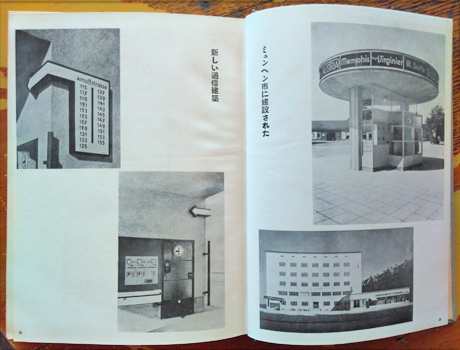
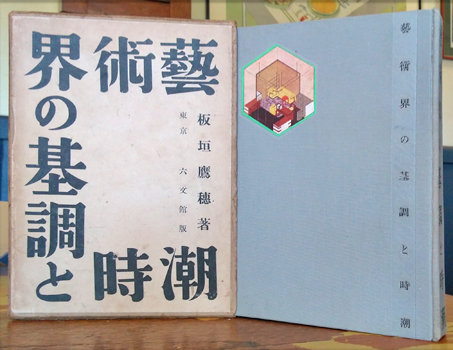
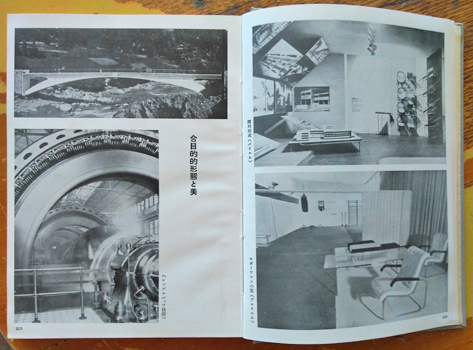
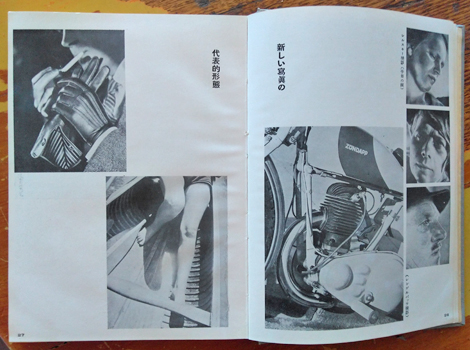

Itagaki Takao. [Geijutsukai no Kicho to Jicho]. Tokyo, Rokubunkan 1932 (Showa 7). 22x16cm, publisher's cloth with onlaid colour illustration, mildly used printed card slipcase; 428pp including 36 pages of photo illustrations. Rather good. Au$650
First edition. Itagaki was seemingly indefatigable as a champion of modernity and modernism in the late twenties and early thirties. Between 1929 and 1933 he worried at the relationship of the machine to art, design, architecture, photography and film, propounding his concept of "machine realism" in a small bundle of books like this. Come the deadly government crackdown on Itagaki's natural disputants - the "proletarian realists" - he apparently retreated into conservative didactic writing on western art and film.


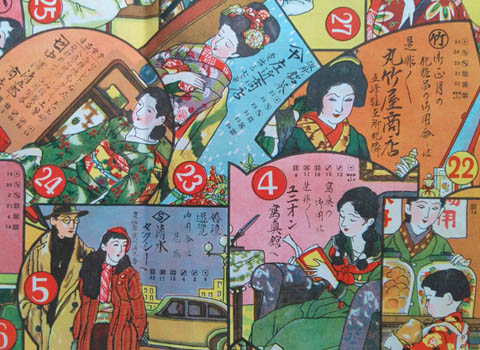
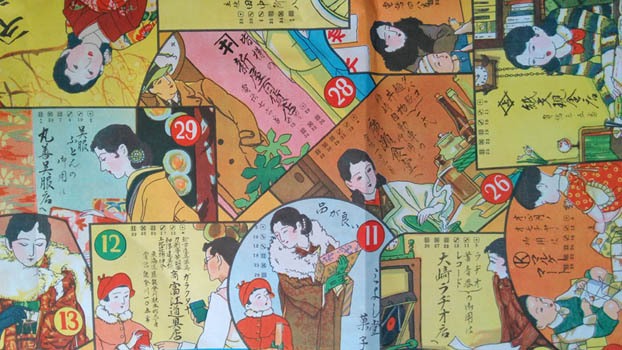

Advertising Sugoroku. [Shobai Hanei Sugoroku]. Tokyo printed, Notagawa Ekimae Shoten 1935 (Showa 10). Colour broadside 79x55cm. Minor signs of use, a pretty good copy. Au$400
A proper aspirational sugoroku for girls and young women. Prosperity is the reward for the perfect modern girl: good husband, handsome family and shopping, shopping shopping. This shopping game advertises the glamorous range of businesses in Notagawa - now part of Higashiomi, more or less half way between Kyoto and Nagoya. The same game, relabelled, was used for businesses of Matsumoto City. A very similar - a few panels the same - but not so modern game - more kimonos, fewer cars, furs and bobbed or marcelled heads - with the same title was issued the year before by the newspaper Tokyo Nichinichi Shinbun for readers in the Iwamurata-machi area. You don't waste a good idea and a decent bit of artwork.
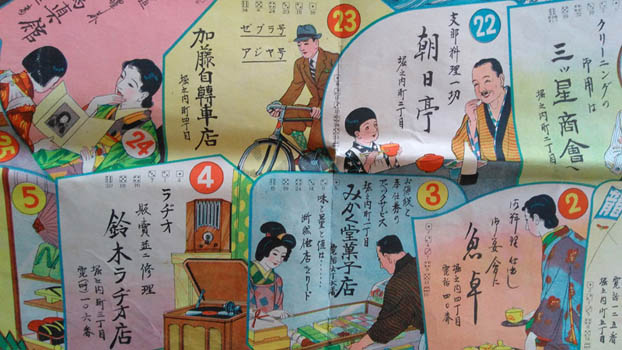
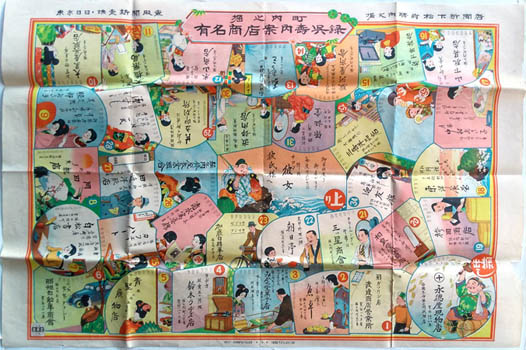
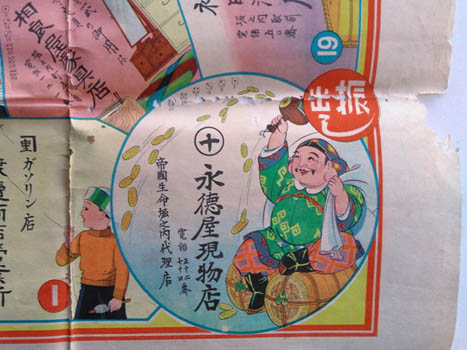
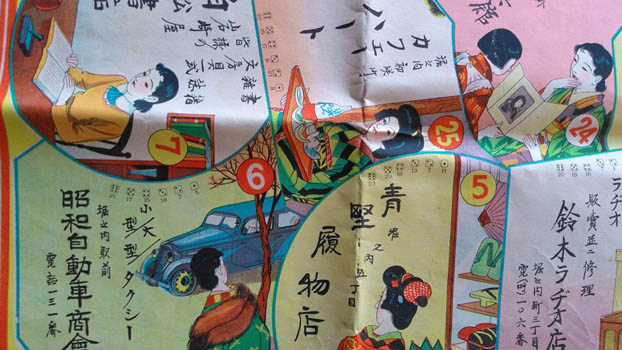

Sugoroku. [Yumei Shoten Annai u Kure-Roku]. Tokyo, Hirohidesha 1936 (Showa 11). Colour broadsheet 54x79cm. Chewed in the left margin and along a couple of folds, marring a bright copy. Au$210
A rare, cheerful shopping game advertising the businesses of Horinouchi-cho. As there are any number of Horinouchi-chos spotted around Japan I'm not sure which one but as this seems to have come from the newspaper Tokyo Shimbun I'm guessing it's around Tokyo. I came across one other copy of the game but it has a different title and advertises different businesses in a different area.
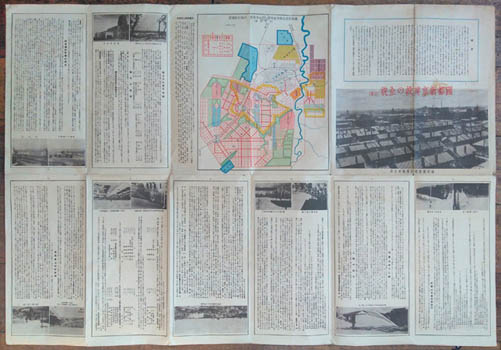
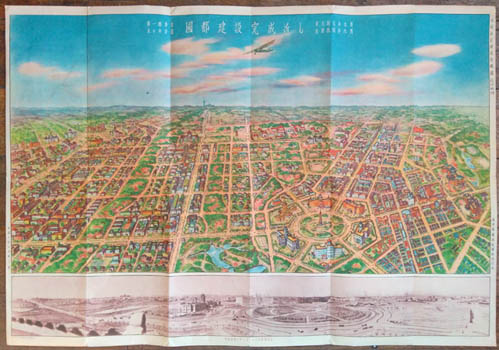
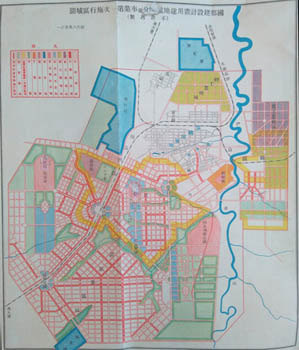
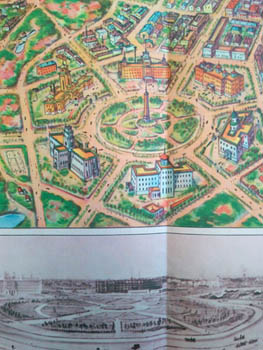

City Planning. Xinjing or Shinkyo (Changchun) - Manchukuo. [Kokuto Shinkyo Kensetsu no Zenbo]. Shinkyo, Manshukoku Kokumuin Kokuto Kensetsukyoku 1936. Colour printed sheet 54x78cm with colour bird's eye view and panorama on one side; colour plan, smaller b/w photo illustrations and text on the other. Folded as issued, a small knick in a margin, minor signs of use. Au$750
In many ways the new capital of Manchukuo was - is - a planner's dream. Here was an empire building militaristic government wanting to both experiment with all that had been learned about city planning and show the west that not only could they do it, but do it better.
Changchun, a hybrid Chinese-Russian-Japanese railway town, was appointed the new capital, it was renamed, a five year plan for a new city was drawn up under the guidance of Professor Riki (or Toshikata) Sano in 1932, a quick compromise with a competing plan was made, and building was underway in early 1933.
Local interests (ie the Chinese and Manchu population) and business were allowed notional input but the brief was clear: social theory, technology and architecture that made for an efficient colonial capital could be put into place, local self-interest could not. Of course it was not so simple. This was to be a pan-Asian showcase, superior to western, especially colonial western, models - not equal. Confucianism, traditional ritual and Asian racial harmony were to be a central part of the city. What more could any urbanist ask for?
Students of the plan might like to start with Yishi Liu's 2011 doctoral thesis, 'Competing Visions of the Modern;' where Griffin's Canberra plan and Griffin's diagrams for road classification are illustrated beside Xinjing's. By 1936 - when our view of the future city was produced - a lot was still dust and open space but, by the gods, whatever else they learnt from Burley Griffin's Canberra - and it was a lot - about planning a city, they certainly learnt how not to build a city.
What they already knew is what all architects know - by instinct? - to redraw plans to fit what has been built and what is likely to be built. This is, I think, the third or fourth of such views of the new city. There were similar prints in 1933, maybe in 34, and 35. The city was declared open in 1937. I'm yet to see the first but the changes between 1935 and 1936 are noteworthy. The plan is much the same, mildy shrunk, and some buildings in our imaginary bird's eye view may reflect actual building but what becomes clear is that ambition has been scaled back to come closer to what they thought could exist next year. City blocks of large scale housing are now more sparse clumps of bungalows; elaborate Sino-Japanese modernism is plain modernism.
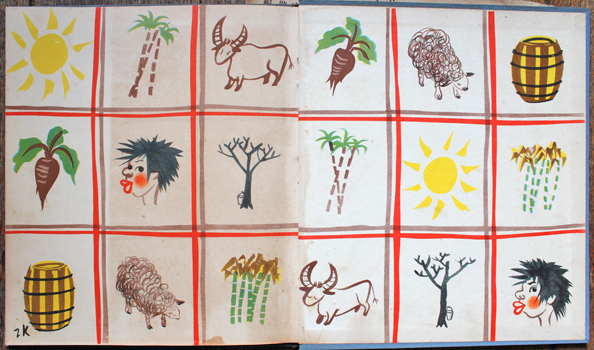
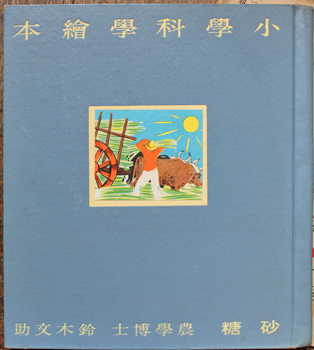

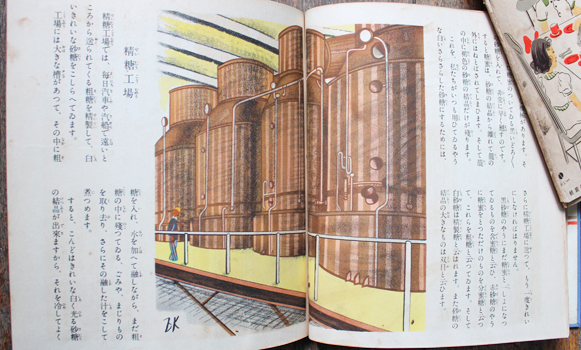

Kurita Jiro (illustrator). : [Shogaku Kagaku Ehon : Sato]. Tokyo, Mitsukoshi 1937 (Showa 12). 215x195mm, publisher's boards with mounted illustration, dustwrapper (this worn and browned but all there); colour and b/w illustrations throughout by Kurita. Some browning of offsetting. Au$80
This is volume 12 of the 12 volumes series Shogaku Kagaku Ehon - elementary science - devoted to sugar. This is a quite exciting and vivid series hidden under dreary dustwrappers so it is natural to discard the dustwrappers immediately. They seemed inexplicable to me until I realised that many of these artists were in disgrace with officials and neither high modernism nor the fanciful were suitable for anyone let alone an impressionable child. The dustwrappers are the book equivalent of thick rimmed glasses and a false moustache. Proof that communists and such troublemaking artistic riff-raff can't be trusted.
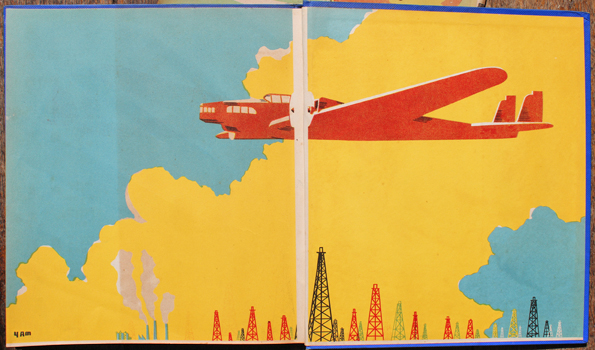
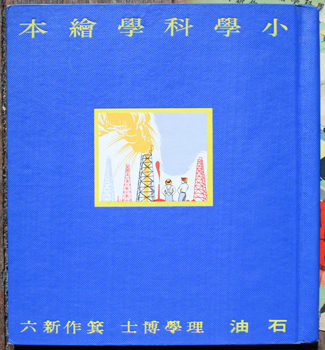
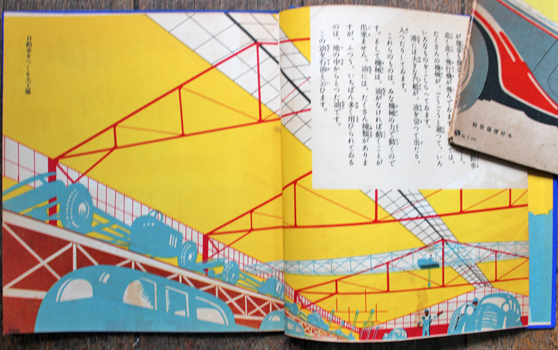
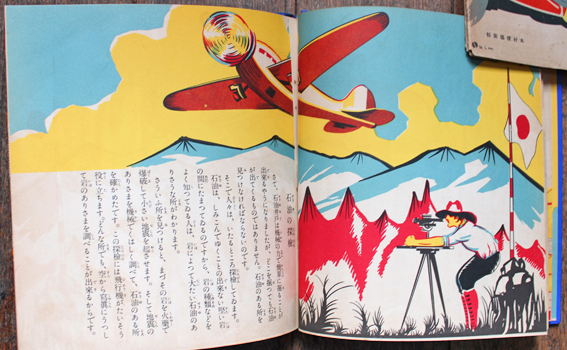

Yamashita Ken'ichi (illustrator). : [Shogaku Kagaku Ehon : Sekiyu] . Tokyo, Mitsukoshi 1937 (Showa 12). 215x195mm, publisher's boards with mounted illustration, dustwrapper (this used: browned and a bit chipped); colour and b/w illustrations by Yamashita throughout. Some browning here and there. Au$150
This is volume 10 of the 12 volumes series Shogaku Kagaku Ehon - elementary science - devoted to oil. This is a quite exciting and vivid series hidden under dreary dustwrappers so it is natural to discard the dustwrappers immediately. They seemed inexplicable to me until I realised that many of these artists were in disgrace with officials and neither high modernism nor the fanciful were suitable for anyone let alone an impressionable child. The dustwrappers are the book equivalent of thick rimmed glasses and a false moustache. Proof that communists and such troublemaking artistic riff-raff can't be trusted.
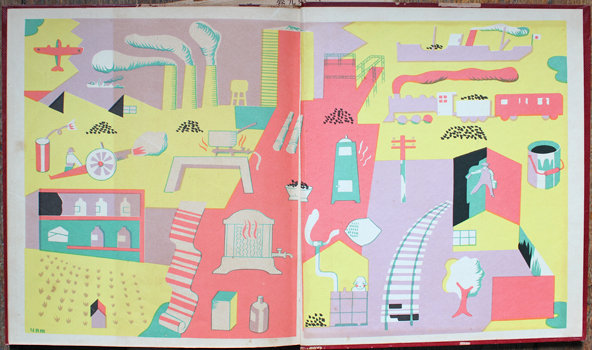
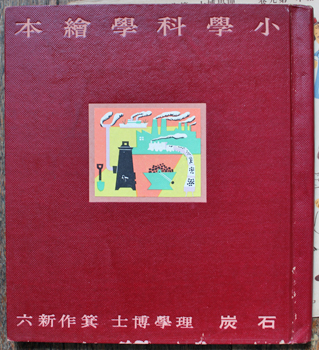
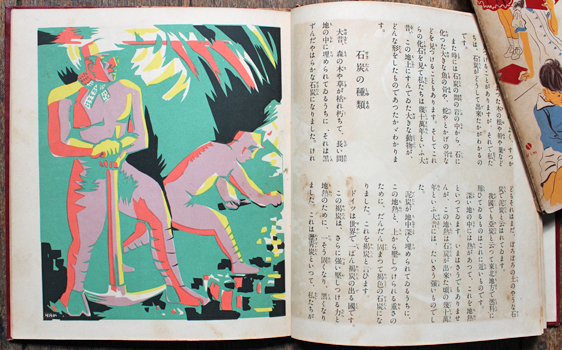
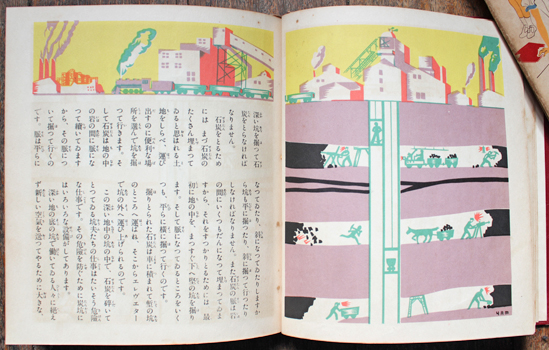

Yamashita Ken'ichi (illustrator). : [Shogaku Kagaku Ehon : Sekitan] . Tokyo, Mitsukoshi 1937 (Showa 12). 215x195mm, publisher's boards with mounted illustration, dustwrapper (this used: browned and a bit frayed); colour and b/w illustrations by Yamashita throughout. Some browning here and there. Au$125
This is volume 9 of the 12 volumes series Shogaku Kagaku Ehon - elementary science - devoted to coal. This is a quite exciting and vivid series hidden under dreary dustwrappers so it is natural to discard the dustwrappers immediately. They seemed inexplicable to me until I realised that many of these artists were in disgrace with officials and neither high modernism nor the fanciful were suitable for anyone let alone an impressionable child. The dustwrappers are the book equivalent of thick rimmed glasses and a false moustache. Proof that communists and such troublemaking artistic riff-raff can't be trusted.
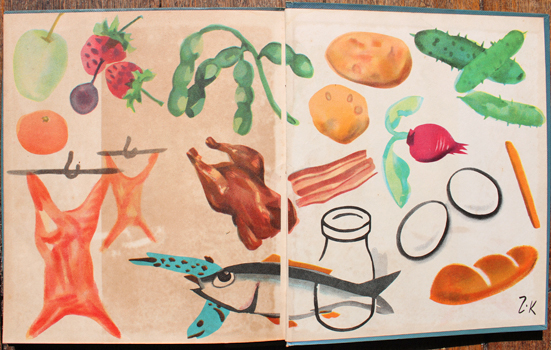
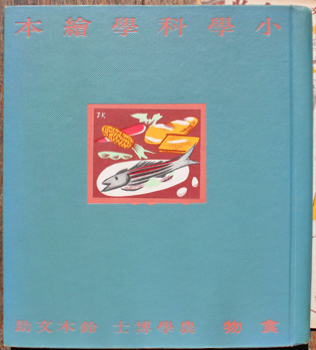

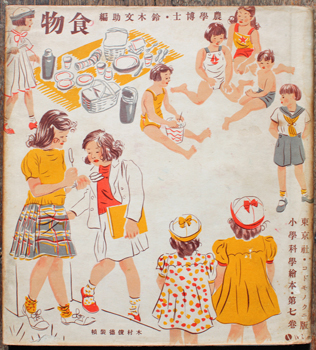

Kurita Jiro. (illustrator). : [Shogaku Kagaku Ehon : Shokumotsu] . Tokyo, Mitsukoshi 1937 (Showa 12). 215x195mm, publisher's boards with mounted illustration, dustwrapper (this a bit browned and smudged); colour and b/w illustrations throughout by Kurita. Some browning. Au$80
This is volume 7 of the 12 volumes series Shogaku Kagaku Ehon - elementary science - devoted to food. This is a quite exciting and vivid series hidden under dreary dustwrappers so it is natural to discard the dustwrappers immediately. They seemed inexplicable to me until I realised that many of these artists were in disgrace with officials and neither high modernism nor the fanciful were suitable for anyone let alone an impressionable child. The dustwrappers are the book equivalent of thick rimmed glasses and a false moustache. Proof that communists and such troublemaking artistic riff-raff can't be trusted.
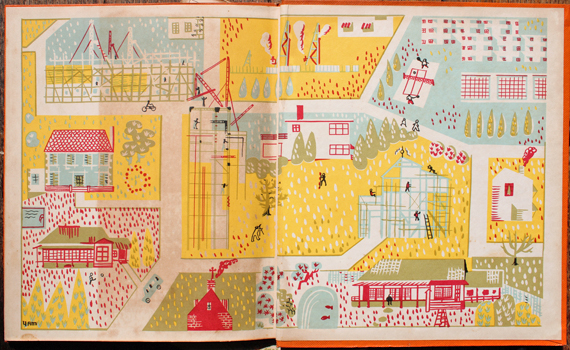
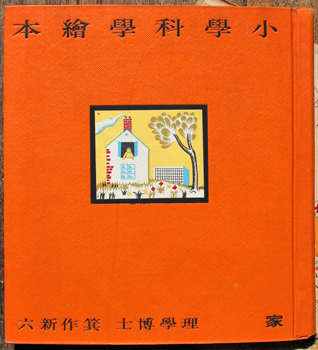
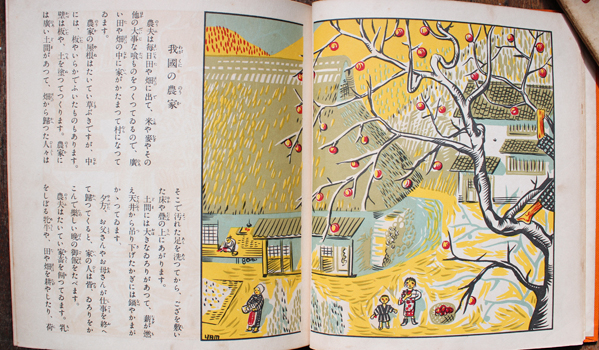
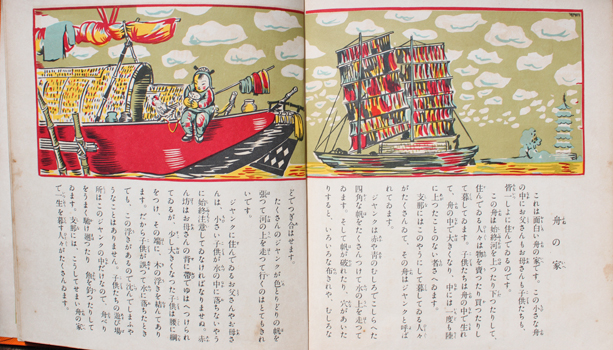

Yamashita Ken'ichi (illustrator). : [Shogaku Kagaku Ehon : Ie] . Tokyo, Mitsukoshi 1937 (Showa 12). 215x195mm, publisher's boards with mounted illustration, dustwrapper (this used: smudged and a bit frayed); colour and b/w illustrations by Yamashita throughout. Some browning here and there. Au$100
This is volume 8 of the 12 volumes series Shogaku Kagaku Ehon - elementary science - devoted to housing. This is a quite exciting and vivid series hidden under dreary dustwrappers so it is natural to discard the dustwrappers immediately. They seemed inexplicable to me until I realised that many of these artists were in disgrace with officials and neither high modernism nor the fanciful were suitable for anyone let alone an impressionable child. The dustwrappers are the book equivalent of thick rimmed glasses and a false moustache. Proof that communists and such troublemaking artistic riff-raff can't be trusted.
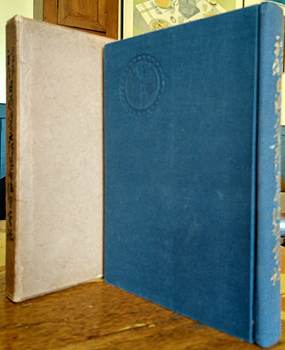
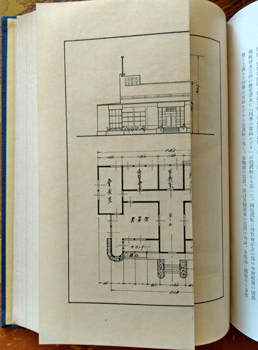
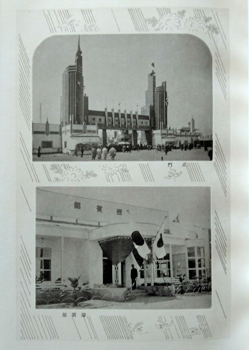
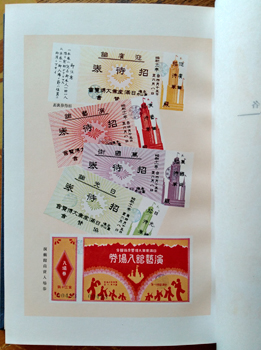

Exhibition - Toyama 1936. [Toyamashi Shusai Nichiman Sangyo Daihakurankai Kyosankai Shi]. Toyama 1938 (Showa 13). 23x16cm publisher's cloth and card box; numerous photo illustrations, colour plates, folding plans and elevations. A nice copy. Au$650
The official report on the 1936 Japan-Manchuria Great Industrial Exhibition. Though blemished by too many portraits of personages, this is still an excellent record of thirties Japanese expo architecture and design with coloured pictures of posters, advertising, tickets and so on, plans and elevations of buildings, lighting, and photo views. There is also the obligatory Hatsusaburo colour folding birds-eye panorama.
Worldcat finds two copies outside Japan, both in California.
  3 4 5 [6] 7 3 4 5 [6] 7   |